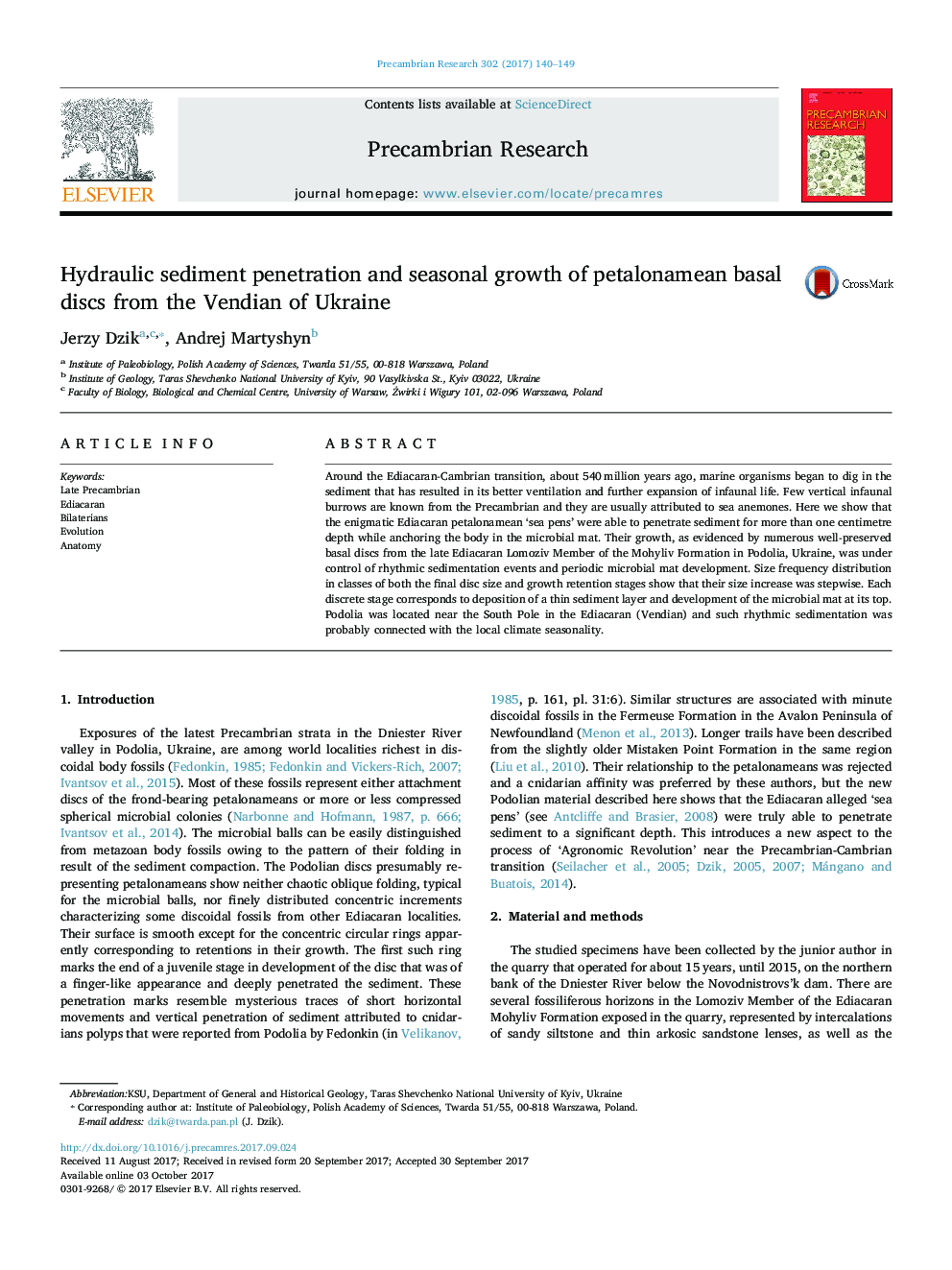| Article ID | Journal | Published Year | Pages | File Type |
|---|---|---|---|---|
| 5784654 | Precambrian Research | 2017 | 10 Pages |
Abstract
Around the Ediacaran-Cambrian transition, about 540â¯million years ago, marine organisms began to dig in the sediment that has resulted in its better ventilation and further expansion of infaunal life. Few vertical infaunal burrows are known from the Precambrian and they are usually attributed to sea anemones. Here we show that the enigmatic Ediacaran petalonamean 'sea pens' were able to penetrate sediment for more than one centimetre depth while anchoring the body in the microbial mat. Their growth, as evidenced by numerous well-preserved basal discs from the late Ediacaran Lomoziv Member of the Mohyliv Formation in Podolia, Ukraine, was under control of rhythmic sedimentation events and periodic microbial mat development. Size frequency distribution in classes of both the final disc size and growth retention stages show that their size increase was stepwise. Each discrete stage corresponds to deposition of a thin sediment layer and development of the microbial mat at its top. Podolia was located near the South Pole in the Ediacaran (Vendian) and such rhythmic sedimentation was probably connected with the local climate seasonality.
Related Topics
Physical Sciences and Engineering
Earth and Planetary Sciences
Geochemistry and Petrology
Authors
Jerzy Dzik, Andrej Martyshyn,
